This article was co-authored by Luna Rose. Luna Rose is an autistic community member who specializes in writing and autism. She holds a degree in Informatics and has spoken at college events to improve understanding about disabilities. Luna Rose leads wikiHow's Autism Project.
There are 12 references cited in this article, which can be found at the bottom of the page.
This article has been viewed 69,403 times.
Autism is one of the pervasive developmental disorders, with symptoms that usually appear before three years of age. Life can be stressful for autistic people, which can result in some behavior that is difficult for parents and caregivers to respond to. However, with love and respect, you can increase social skills and help your child find happiness.
Steps
Handling a Lack of Responsiveness
-
1Understand that a lack of responsiveness is a common sign of autism. They may not know how to offer social or emotional support to others, and a few may display extreme unfriendliness and detachment. Other autistic people deeply care about others, but are unsure how to act appropriately and help the people they love.
- This lack of responsiveness is one reason for the difficulties that some autistic people face in securing and keeping employment, and making friends.
- Keep in mind that even an extremely unresponsive child can probably still hear you; they just don't have a way to communicate yet. Therapies such as RDI and RPM can help them engage more.[1]
-
2Teach social skills directly. While many children pick up social skills naturally, just by observing and participating in groups, autistic children often need direct instruction. Parents and special education teachers can and should spend considerable time teaching autistic children to socialize politely (often, at first, following “scripts”) and recognize the needs and emotions of others.Advertisement
-
3Encourage limited social interactions. Many autistic children begin, over time, to express an interest in making friends–especially if they are offered many opportunities to do so. Set up brief playdates and visit fun places where other children will be present. If your child doesn't socialize well, explain to them that it is for a limited time only, which will help them feel less overwhelmed.
-
4Make sure your child spends some time with both autistic and non-autistic children. Interacting with non-autistic children helps your child develop more attentive and responsive behaviors. Fellow autistic children teach your child that there is nothing wrong with them, and that there are other people just like them. For older children, autistic peers can offer support and insightful tips on a level that no one else can.
- Some school programs offer various degrees of “mainstreaming,” in which autistic children spend time in regular classrooms. Depending on your child's learning abilities, this may be a good idea.
- Don't force your child to spend time with bullies or unkind children. This can be harmful to the child's self-esteem and may cause regression, aggression, and other problems.
-
5Offer plenty of positive reinforcement. Instead of punishing, encourage your child whenever he or she makes an effort to respond to others or engage in social situations. Praise your child, applaud his or her efforts, and offer a reward – a gold star, a trip to the ice cream place, or anything else that motivates.
- Don't punish/criticize the child or push them to do something if they aren't comfortable, because they'll associate social interactions with negative feelings. The child should feel respected and be able to meaningfully say no.
Coping with Language and Communication Problems
-
1Know that communication problems are typical of autism. Autistic children may not develop speech in the same manner or time frame as their peers do. They might engage in unusual speech patterns, including echolalia – the repetition of words or sentences spoken by others, sometimes in the same tone or accent.[2] [3] In addition, autistic people may have some of the following language issues:
- Confusion of pronouns. Autistic people may confuse “I” and “you” regularly, for example. This is part of the language learning process, so don't worry.
- Literal thinking. Autistic people may not understand figures of speech, jokes, and teasing.
- Receptive language difficulties. Even if a child has a vast knowledge of vocabulary and syntax, they may not process spoken words well. You may need to repeat yourself or write things down.
- Frustration. These difficulties can be very frustrating!
-
2Work with your child’s abilities. The best approach to language and communication issues depends upon your child’s ability levels. If your child cannot speak at all, for example, it’s best to start with basic signs – even just teaching your child to point at what they want. If, on the other hand, your child speaks in words and phrases, you can work on teaching simple sentences.
- AAC can help a child communicate in words, even if they can't speak.[4]
- Don't feel bad if your child never learns to speak. Nonverbal autistic people can be very happy and successful in life, like Amy Sequenzia. Your child may learn to communicate very well in alternative ways, such as sign language, typing, facilitated communication, and more.
-
3Pursue speech therapy to help with speaking skills.[5] Speech therapists can help with clarity, sentence structure, and reciprocal behavior. Many therapists are respectful and kind, so your child may look forward to therapy every week!
-
4Talk to your child. Be conversational, even if, for the time being, the conversations are one-sided. Explain why things happen the way they do, especially if your child seems upset or confused about something. (For example, "Going to the grocery store means that we can have enough healthy and yummy food for the week. You can help me pick out good things when we get there.") Recite poems and sing songs.
-
5Be a storyteller. Tell your child stories daily – especially at bedtime, when they are tired and ready to listen. Encourage your child to tell a story of their own, whether you can understand it or not; this will make your child more confident and less frustrated.
- In general, it’s best to avoid making your child feel too awkward. During these stories, appreciate what your child is trying to convey, and ask a question or two if you want to understand better. Avoid pretending to understand, because your child can probably tell you're faking it. Instead say "I don't understand, but I care and I'm glad you're talking to me."
-
6Use repetition to teach vocabulary. Repeat the words that you want your child to learn, while pointing at or touching the desired object – “This is your bed. Bed. Can you say bed?” – and praise your child for repeating after you and participating.
-
7Look into AAC if speech isn't working well. If oral communication is very difficult for your child, consider developing a picture communication system. Have pictures of important things your child might want to communication – for example, food, drink, a book, a favorite toy, bed. Your child can then use these pictures to show you what they want.
- AAC can help bridge the gap if your child isn't ready for speech yet. It'll teach them the basics of reciprocal communication (which lays a good foundation for speech), allow them to express themselves, and help get their needs met.
Dealing with Meltdowns and Tantrums
-
1Understand why destructive behaviors occur. Possibilities include:
- Frustration over a lack of communication. Imagine having something important to say, but being unable to form words or coherent sentences. This feels incredibly frustrating, and your child may act out.
- Sensory overload. Autistic individuals can become overstimulated when too much is going on in a room.[6] Bright lights and loud noises may be very upsetting and painful. This can lead to meltdowns (which look like tantrums, but aren't done on purpose) or shutdowns (which involve passivity and withdrawal).
- A desire not to do something. When pushed to do something they don't want to do, your child may throw a fit.
- Last resort. If a child doesn't believe that you will respect verbal or alternative communication, they may act out due to the belief that it is the only way to be acknowledged.
-
2React calmly and compassionately. Never raise your voice or frighten your child. Behave the way you want your child to behave when they are angry, because they will learn from watching you. Take time to cool down if you need to.
- Make it clear that you care about what's bothering them, even if you don't know what it is.
- Help your child calm down. Allow them some quiet time, or offer to use some self-calming strategies together. Figure out which strategies work best for your child.
-
3Offer help. Show your child that they don't have to deal with frustration or overstimulation alone. If, for example, your child is upset because you are pushing them to make the bed, you can offer to make the bed together, or let the issue drop.
-
4Use rewards. It can be very effective to offer your child a reward for completing a task or handling a frustrating situation. Perhaps your child is afraid of doctor’s appointments but loves building model cars. Tell your child that once the doctor’s appointment is over, the two of you can build a car together. Doing so adds a level of excitement and a possible reward, which may be enough to help her handle the frightening situation.
Avoiding Self-Injurious Behavior
-
1Know that self-injury is common among autistic people. Frustration and overstimulation can lead to self-injurious behavior (SIB). This behavior can be very scary for parents, but you should know that it is common and preventable.
- Make a doctor appointment. Sometimes SIB is related to pain. For example, a child who hits their own head may be experiencing pain from a toothache or lice. Solving the medical problem may make the SIB disappear.
- Researchers also believe that biochemicals play a role. During self-injury, endorphins are released, which inhibit the individual from feeling much pain while making them feel happier.
-
2Experiment with nutritional intervention. Some parents have noticed that switching to a gluten-free diet helps, as does increasing the intake of vitamin B6 and calcium.
- Some of the best sources of vitamin B6 include sunflower seeds, pistachio nuts, fish, poultry, pork, beef, prunes, raisins, bananas, avocados, and spinach.
- Some of the best sources of calcium include milk, cheese, yogurt, spinach, kale, okra, collards, soybeans, white beans, and calcium-fortified juices and cereals.
- Always consult a doctor before altering a child's diet.
-
3Encourage safe forms of stimulation. Some autistic individuals rub their skin excessively to receive stimulation or do some other potentially injurious behavior and wind up hurting themselves. Intervene by encouraging safer forms of stimulation. Massage can work, as can rubbing the skin lightly with a brush, or wearing a thin layer of clothing over the skin (e.g. sweatpants) to prevent damage while scratching.
- Say something like "You're hurting your legs. Could you massage them instead of hitting them?"
- Remember that many autistic people don't like the idea of hurting themselves. Work with your child to find alternative ways to stim. For example, hitting one's head could be replaced by rapidly shaking the head. Search the internet to see what substitutes autistic adults have found for their SIB.
- Be consistent. Autistic children need to know that self-harm is not appropriate or allowed, that you will always be there to help them handle it. Work with other caregivers and teachers so that everyone uses the same approach.
-
4Deal with sources of frustration. If your child’s self-injurious behavior seems to result from frustration, do what you can to deal with that. This may mean developing new communication methods, backing off on certain activities, or taking care not to put your child in a situation likely to cause sensory overload.
Reducing Anxiety
-
1Accept their repetitive behaviors and desire for routine and consistency. It's normal for autistic people to stim or attach themselves to certain objects or subject matters. Don't teach your child that it's wrong to stim or enjoy special interests, because it stunts their emotional growth and makes them feel ashamed and afraid to show their true selves.
- Special interests can help build confidence and expertise. They may even turn into a great career someday.
-
2Stick to a routine. Many autistic children thrive when they have a regular, predictable routine. Knowing when they will eat, play, learn, and sleep makes the day less frightening, overwhelming, and unpredictable. This helps relieve anxiety and the meltdowns that can follow it.
- Implementing a new routine can be difficult, so be patient. It will take some time for your child to understand the routine and realize that it will remain the same or similar every day. Explain the routine to your child, and use a picture schedule to help them predict events. Your persistence will pay off – once the routine feels natural and internalized, your child will feel better.
-
3Play with your child often. Keep this play relaxed and child-directed, and let your child play as they want to play – even if this play is somewhat unusual or repetitive. For example, if your child likes buttons, give them a handful of them to play with, and join in if possible.
- Older autistic children may enjoy setting up their toys in scenes. Toys such as Legos can be good choices for an autistic child.
-
4Try music. Some autistic children respond very well to music. If you notice a lot of anxious behavior, try playing something soft and pleasant. Doing so may help your child relax.
-
5Consider massage therapy. Incorporating a brief massage into your child’s daily routine may help promote relaxation. This massage doesn’t have to be professional – you can perform it yourself!
-
6Keep a positive attitude. Recognize that your child is doing their best with the limited resources they have. If your child feels chastised or attacked, he or she will likely retreat to a solitary world. Therefore, it’s best to stay warm, kind, and positive, even if you feel frustrated. When chiding your child, remain compassionate and reassuring, giving your child time to calm down afterwards.
- Assume that your child is struggling, not intentionally misbehaving. For example, instead of "my child won't tell me what's wrong," think "my child can't tell me what's wrong." This attitude can help you focus on helping, instead of punishing.
-
7Make sure your child feels valued. Tell your child that they are just as important as other members of the family, and follow through on your words by treating your child with love, respect, and generosity. When children feel secure, they are less likely to need the rigid and repetitive habits.
- Make sure your child knows that you love them, autism and all.
Discouraging Cursing and Other Interfering Behaviors
-
1Understand that autistic people will sometimes act out. The same issues that cause other challenging behaviors – frustration, insecurity, and overstimulation – can also make an autistic child prone to behave in socially unacceptable ways. They may do unusual things, like screaming or making strange noises.
-
2Recognize that autistic people often miss social cues. Autistic people may not realize when their behaviors are making others uncomfortable, and they don’t necessarily recognize facial expressions or body language. It’s important to understand that they are usually not being intentionally disruptive.
-
3Calmly explain to your child that a particular action is not appropriate. Leave it at that. If the child was not intending to misbehave, then chastising will only make them feel worse, and if the child is looking for attention, then refusing to engage with bad behavior signals that this is not the way to get it.[7]
- If your child continues misbehaving for attention, even after you ignore the bad behavior, calmly say "Screaming is not going to get you what you want. If you want something, why don't you talk to me or type me a message about it?" Being explicit, and offering a better solution, clearly communicates that the behavior is ineffective.
-
4Watch your own behavior. If, for example, you do not want your child to curse, then you should refrain from cursing. Children learn from observation, and the “do as I say, not as I do” rule will not work.
-
5If you follow all these steps and your child continues to misbehave, implement consistent consequences. Take away something your child sees as a privilege – for example, you might eliminate television for the day.
- The most important aspect of this technique is consistency. If your child suspects that you may not follow through, he or she is unlikely to stop the behavior. Consistency makes it clear that you mean what you say.
- Only use punishment as a last resort.
Handling Stimming
-
1Recognize that stimming, or unusual motor movements, are a normal and healthy part of the autism spectrum. Most autistic children engage in unusual motor movements – they jump, spin, twist their fingers, flap their arms, walk on their toes, and make strange faces. Like self-injurious behaviors, these motor movements are self-stimulating, but they are not harmful. Stimming helps children control their emotions, focus on tasks, prevent meltdowns from sensory overload, and feel good.
-
2Teach your child that stimming is okay, and that everyone stims to some extent. (Tapping pencils, pacing, playing with hair, and tapping feet are all examples of stims that neurotypicals engage in too.) Never scold or mock your child for stimming, because this will harm their self-esteem and make coping more difficult.
- It is okay to casually let your child know that a stim looks odd. However, don't pass judgment or try to stamp it out of them. The stim may be very important to them. Let them choose whether it's worth the effort to redirect it or not, and give them your full support either way.
-
3Offer plenty of stimulating attention. If you spend lots of time engaged in playful interactions with your child, they will stim in moderation. Teach your child new games, and try to introduce imaginary play. Children who constantly stim are probably in need of more activity.
- Trampolines, exercise balls, tree-climbing, swimming, recreational sports, and going on walks can help hyperactive children get the stimulation they need, so they can sit calmly during school.
- Keep plenty of fidget toys around. Your child may not sit still, but mild/moderate fidgeting can be enough to help them focus.
-
4Make sure that your child's peers understand stimming. Talk with teachers and aides to ensure that your child's peers learn good social skills and don't bully your child for being different. Autistic children should never be afraid to stim.
-
5Provide toys for stimming. Your child may enjoy playing with a doll's hair or fidgeting with a tangle. This allows your child to choose when they want to stim conspicuously, and when they prefer to stim in ways that don't attract attention. Encourage your child to explore with different stims so that they can choose the ones that are most comfortable to them.
Addressing Food Sensitivities
-
1Be realistic. Autistic individuals often have food sensitivities. This may make a lot of foods inedible to them. You need to make sure that your child gets nutrition, but you also don’t want to fight with your child at every mealtime. Keep your expectations reasonable.
- Eating enough food is more important than eating nutritious food.
- Eating a fairly balanced diet is more important than eating a wide variety of foods.
- See if your child can handle eating gummy vitamins if their diet is very limited.
-
2Distinguish between allergies and sensitivities. If your child gets sick after eating a certain food, there may be a reason beyond sensitivity. Many autistic children suffer from gastrointestinal problems and allergies to common foods like milk and gluten. Talk to your doctor to determine which foods should not be served at all.
-
3Pay attention to your child’s sensitivities. Whenever possible, try to determine why your child dislikes a particular item. Is it the texture? The flavor? The color? Ask the child what makes the food so disgusting. You may be able to serve the same ingredients in a different way and make everyone happy.
- Note that autistic children may struggle, particularly, with mixed-up foods like stews and casseroles. Autistic children often like to touch and taste individual ingredients before deciding whether or not to eat them, and these dishes make it difficult for them to do so.
- Offer seasonings on the side, so that each person can season the meal to taste. For example, if your wife likes spicy spaghetti and your daughter cries when given spice, place the spice shakers on the table instead of mixing spice into the sauce.
-
4Be patient, and don't pressure. Many children become more interested in expanding their horizons when they aren't facing constant parental pressure to do so.
-
5Allow your child to “play” with their food. Autistic children may need to touch, smell, lick, or play with their food before eating it. Don’t squash these tendencies out of a misguided concern about table manners. These quirks may ultimately lead your child to eat a greater variety of foods.
-
6Involve your child in food preparation. Preparing meals can be fun, and your child may be more likely to eat the foods they help to make.
- For example, consider making homemade pizza with your child. You can have fun kneading and tossing the dough, make faces with the vegetables, and taste throughout the process. Eliminate certain tastes or textures as you go – if your child hates the texture of chunky tomato pieces, puree them.
- Your child may point out certain ingredients as "gross" or "scary." This can help you learn more about their sensitivities.
-
7Offer choices. Let your child know that it’s acceptable not to like certain foods. Instead of putting broccoli directly on their plate, offer a choice – broccoli, spinach, or asparagus? When your child comes to the grocery store, let them pick out some favorite vegetables. Giving your child some control may make mealtime feel less like a battle.
Incorporating Nutritional Therapy
Some autistic children benefit from special diets. Always ask a doctor before placing your child on a new diet
-
1Understand that diet can play a role in your child’s behavior. Nutritional deficiencies may make struggles worse. Making changes to your child’s diet may help your child overcome certain challenges.
-
2Increase your child’s intake of fatty acids. Omega-3 and omega-6 fatty acids are extremely important for brain development and neurological function – in fact, 20% of an infant’s brain is made up of these essential fatty acids. Insufficient levels of EFAs can produce many psychological problems.
- Try to incorporate small fish, meats, fish oil, and cod liver oil into your child’s diet. You can also add beef to the diet, as this supplies carnitine, which helps in the digestion of EFAs.
-
3Minimize sugar. High sugar levels have been connected to hyperactivity, and too much sugar in the bloodstream may increase anxiety and frustration. Limit candy, ice cream, baked goods, and other high-sugar products.
- It is especially important to avoid sugar at night, when it may disrupt your child’s sleep. The same goes for caffeine – don’t give your child anything that is likely to keep him or her awake.
-
4Switch to organic produce, if your family can afford it. Some studies suggest that organic fruits and vegetables are better for autistic children because they contain fewer pesticides.
-
5Supplement with vitamin B6 and magnesium. Vitamin B6 is required for the production of neurotransmitters, and magnesium may prevent hyperactivity. Give your child a vitamin that includes 100% of the recommended daily allowance of these two components. Try gummy vitamins to make your child look forward to vitamins.
-
6Use iodized salt. Low iodine levels can make your child dull and lethargic, so incorporate iodized salt into your daily diet.
-
7Offer fresh juices. Fresh juices contain essential vitamins and minerals, and they are a much better alternative to sodas or other “juice drinks.” For best results, offer juice that contains the pulp of the fruit (if the child can handle it) – or eat whole fruit instead.
Warnings
- If something you do makes your child cry or beg you to stop, then stop.⧼thumbs_response⧽
- Be careful about behavior modification therapies. They may use abusive tactics, such as holding down your child's hands, ignoring feelings of discomfort or fear, ignoring the right to say no, withholding food, or even using electric shocks.[9] It may result in PTSD. Always make sure that your child is respected during therapy, and that they enjoy (or at least are okay with) therapy.⧼thumbs_response⧽
- Be careful about the organizations you support, and the messages they send about autism. Many autism-related organizations treat autistic children like burdens and spread the rhetoric of abuse. Avoid organizations that aren't run by autistic people, or treat autism as an enemy to be eradicated, such as Autism Speaks.⧼thumbs_response⧽
References
- ↑ https://www.asha.org/practice-portal/clinical-topics/autism/#collapse_6
- ↑ http://musingsofanaspie.com/2013/09/18/echolalia-thats-what-she-said/
- ↑ http://musingsofanaspie.com/2014/10/09/echolalia-and-scripting-straddling-the-border-of-functional-language/
- ↑ https://raisingchildren.net.au/autism/development/language-development/augmentative-communication-asd
- ↑ https://www.nichd.nih.gov/health/topics/autism/conditioninfo/treatments/speech-language
- ↑ https://www.autismsociety-nc.org/sensory-overload/
- ↑ https://www.helpguide.org/articles/autism-learning-disabilities/helping-your-child-with-autism-thrive.htm
- ↑ http://musingsofanaspie.com/2014/07/17/backstopping-supporting-the-autistic-person-in-your-life/
- ↑ http://www.sentex.net/~nexus23/naa_aba.html
- Allen, Francis. Diagnostic and Statistical Manual of Mental Disorders, fourth edition. American Psychological Association, 1999.
- Comer, J.R. Abnormal Psychology, seventh edition. Princeton University Press, 2008.
- http://www.healthaliciousness.com/articles/foods-high-in-vitamin-B6.php


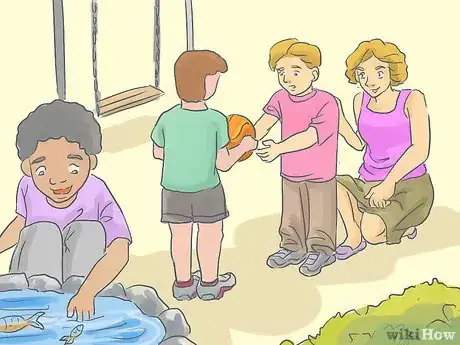
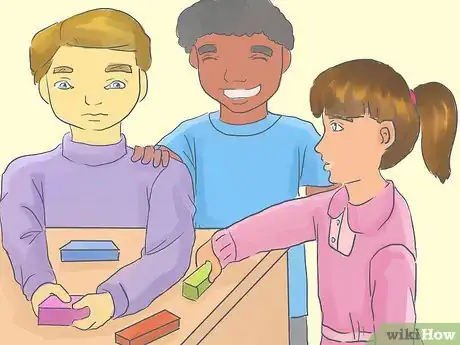
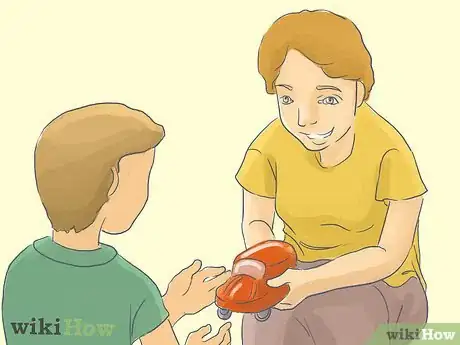


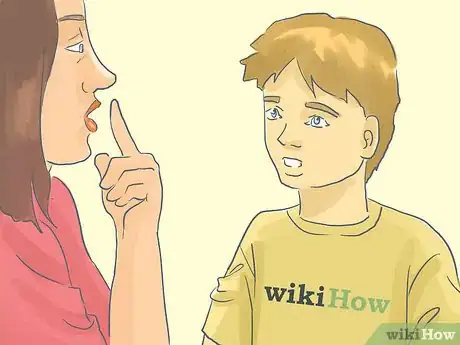




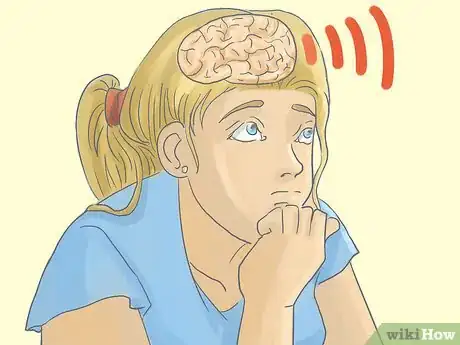
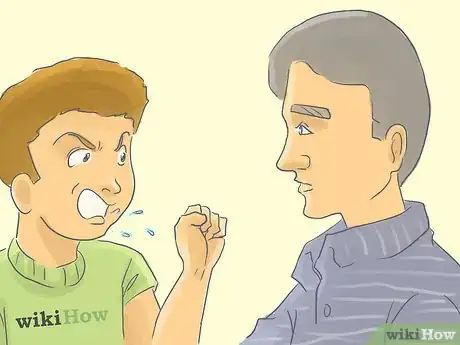



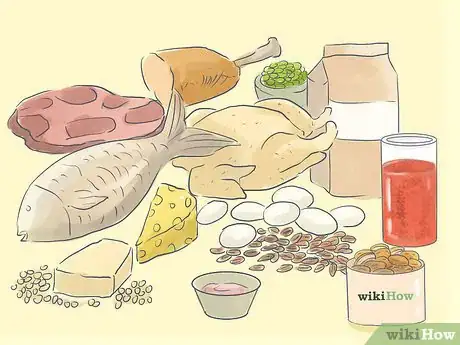
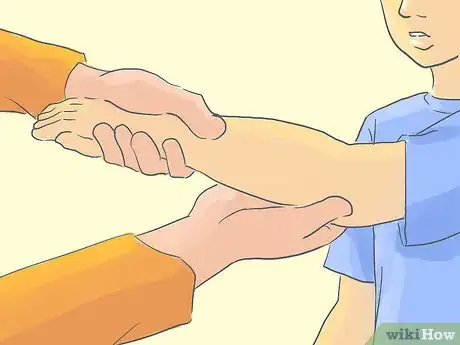












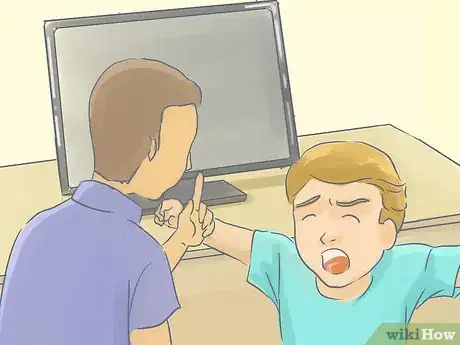
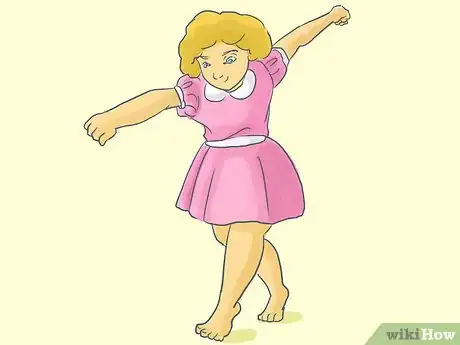


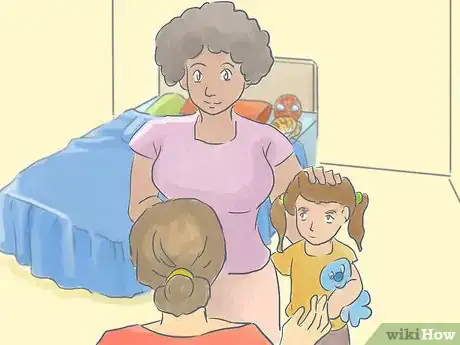
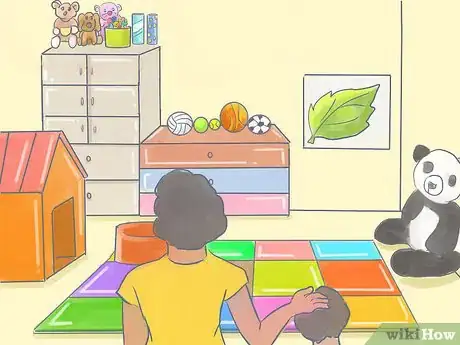
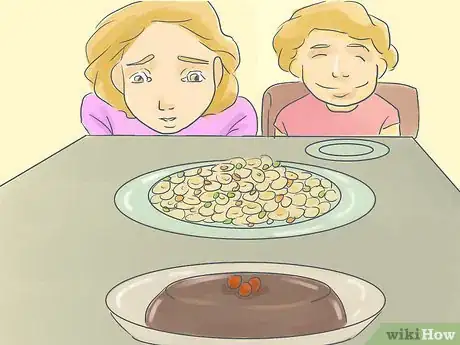
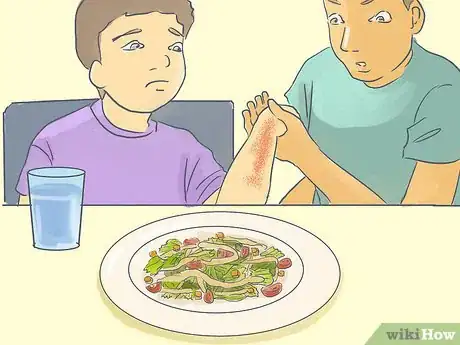

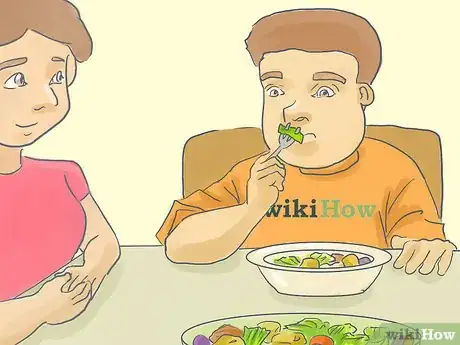




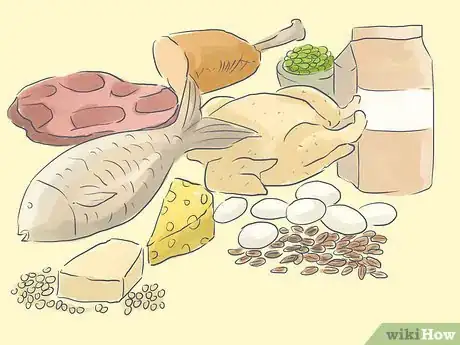































































Medical Disclaimer
The content of this article is not intended to be a substitute for professional medical advice, examination, diagnosis, or treatment. You should always contact your doctor or other qualified healthcare professional before starting, changing, or stopping any kind of health treatment.
Read More...